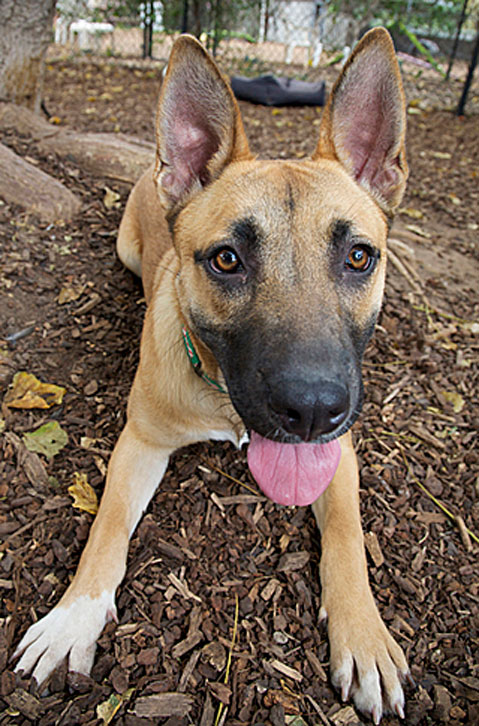Kitty Tricks
Clicker Training for Cats
Whenever my husband has a hard time getting me to do something he wants me to do, he accuses me of being part cat. Cats typically don’t respond to their owners when they’re summoned and they are tough to train; although, according to experts, this isn’t always accurate. Case in point—clicker training. Specialists in this field boast that clicker training can improve your cat’s health, activity level, and even make your cat happier, more affectionate, and better adjusted. With enough training, you can teach your cat to come when called, play without biting or scratching, and even stay off the table. Cats can be taught to walk on a leash and do tricks, all with a click and a treat. I spoke with cat behaviorist Rhonda Douglass from Animal Shelter Assistance Program (ASAP) and got her take on clicker training.
What is the concept of clicker training for cats?
Clicker training is based on positive reinforcement for behavior that we like. The cat performs a behavior that we like and they receive a reward for it. The click is the marker that tells the cat “YES! You did that right! And now you get a reward!” The reward is most often food but can be anything the cat really enjoys.
Why is clicker training useful?
There are so many reasons for using clicker training with a cat. First it helps develop a strong bond between person and cat by creating a method of communicating that both can understand. It also gives the cat a predictable interaction with people in which they always “win.” This is particularly important at the shelter where the cats have so little control over their daily lives. Clicker training gives them just enough control so that they feel like they can make good things happen. This really improves a timid cat’s self-confidence, too. It’s also good for bored or overactive cats because they really have to use their minds. Sometimes that tires them out more than running around the house like a crazy cat!
Why is positive reinforcement the preferred method of training cats?
People frequently think of positive reinforcement when they think of training a dog but most often they think of punishment when they think of training a cat. Punishment teaches a cat what NOT to do but doesn’t teach them an alternative. Most of the behaviors we try to punish are natural cat behaviors that we need to train alternatives for and unless we do that, punishment will ultimately fail. Cats respond really well to positive reinforcement. Why would we want to risk damaging our relationship by punishing them when it simply isn’t necessary or effective? Clicker training is a good way to train appropriate behaviors.
Why is clicker training better than other methods of training?
What makes it different from other forms of positive reinforcement is that we use the clicker to mark the exact second that the cat performs the behavior we are looking for. This allows the cat to make the connection much more quickly. If you were to say “good kitty” and give a treat after the behavior, there is a delay of seconds or more and that is confusing to the cat. The click is sharp and short and marks the exact timing. Clicker training is also very fun for a cat. It becomes a game where they are trying to see what they need to do to make you click. I imagine they think they are training YOU to click and treat.
What kinds of things can you train your cat to do using clicker training?
It’s useful for a wide range of behaviors. You can teach your cat silly parlor tricks like “high five” or even to jump through a hoop. But you can also teach them to allow you to trim their claws easily or get in their kennel. Zoos use clicker training to teach large animals to back up to the bars of their cage and stand still while they take blood samples or give vaccines. At the shelter we use it to teach social behaviors like greetings and eye contact.
How quickly can you expect results?
If your cat is motivated by food, they usually pick up targeting behaviors very quickly. One short session is usually enough to get them to understand that you want them to touch their nose to a target stick.
At what age can you start clicker training your cat?
They can start at about three months but probably won’t have the attention span to work more than a few minutes at a time. But because kittens learn so quickly, you’d be surprised at what they can learn in such a short time.
Can you clicker train an older cat?
Like people, cats can learn at any age. Older cats may take a little longer to catch on but that really depends on the individual cat.
What kinds of things do you need in order to get started on clicker training?
The main things you need are a clicker, food that your cat really finds delicious, and the patience to move slowly. You never want to make the training hard for the cat because that takes the fun out of it for them. You want them to be able to “win.” So any behavior you teach needs to be broken down into tiny little steps to avoid frustration.
Are there any substitutes that can be used for a clicker?
Other markers can be used—the click of a pen, even your voice—but there is a benefit to using a clicker. First, it is a sound that is new and that they don’t hear except when you are training. But also, there have been studies that show that the click stimulates the amygdala, which is the emotional learning center of the brain. It is believed that the click actually triggers a surge of joy in the animal.
What got you interested in clicker training?
I watched a video by Karen Pryor of Karen Pryor Training Academy. Clicker training has been used to train dolphins for decades and Karen has been a pioneer in bringing the concepts to the companion animal world—she’s really brilliant. Clicker training is most often used with dogs, but I knew cats—and I knew I could make it work for them. Later I found out that people all over the world have had amazing success in clicker training cats. Some of the videos on YouTube.com are amazing.
Does clicker training work on other animals?
Clicker training will work with any animal that can has an interest in food and can either hear a click or see a signal. I have seen goldfish that were trained to swim thru hoops and hermit crabs that were trained to move rocks. They used visual markers instead of a clicker, but the process was the same.
I had the pleasure of videotaping Rhonda demonstrating clicker training with two kitties—Tiffany and Thomas—who are up for adoption at ASAP: http://www.youtube.com/watch?v=1tZUqlLWmG4.
For more information on Animal Shelter Assistance Program and to see more adoptable cats, visit www.asapcats.org or call (805) 683-3368

Adoptable Pet of the Week
Louise, a six-month-old, 36 pound, Shepherd mix, is shy, but playful and friendly. She’s currently staying with her sister, Thelma, at the shelter, and they’re gaining confidence together. With proper dog and people socialization and of course basic training, Louise will blossom into a gorgeous, confident girl. Louise would do well with kids 12 and up. Sorry, no cats.
To find out more about Louise (and her sister Thelma), visit them at K-9 PALS, 5473 Overpass Rd., 681-4369 or online at www.k-9pals.org.



